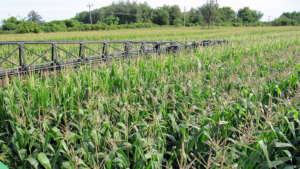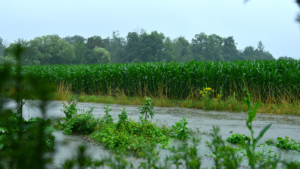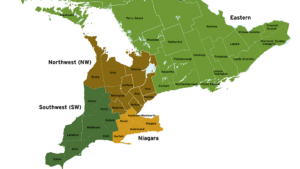Purple seed stain
AGRONOMIC INFORMATION FROM ONTARIO'S CROP SPECIALISTS

PURPLE SEED STAIN (Cercospora blight) causes a distinctive purpling of soybean seed and will result in downgrading at harvest if enough seed is discoloured (photo 1). This fungal disease is also called Cercospora leaf spot since symptoms of the disease can also be found on the leaves. The incidence and severity of purple seed stain appear to be increasing in southwestern Ontario and can be a significant challenge for IP growers and fields grown for seed production. This fungus is seed-borne, so subsequent crops will be infected from diseased seed. The inoculum overwinters in soybean residue and produces air-borne spores, so it’s also spread in fields with a poor crop rotation.
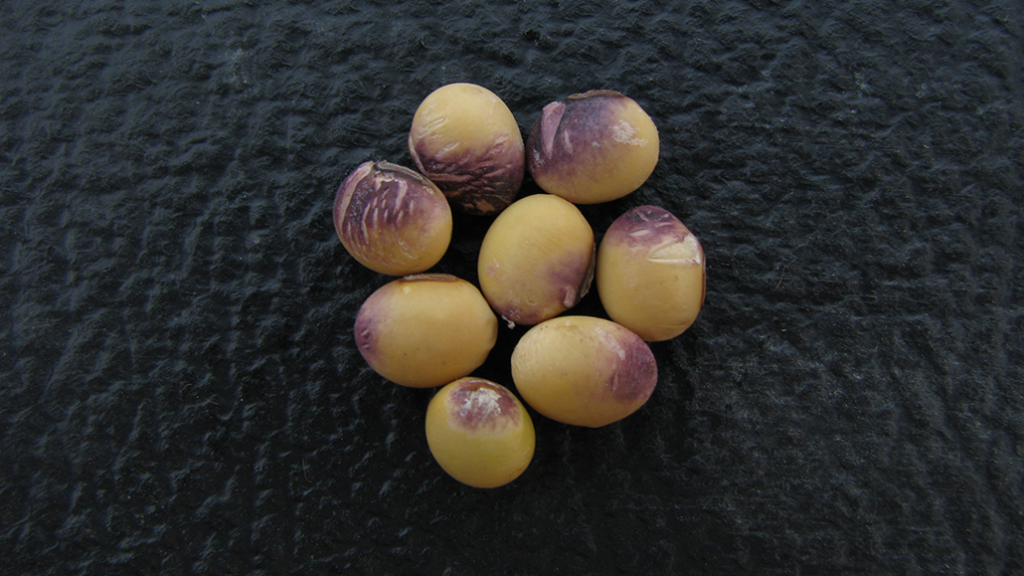
DISEASE SYMPTOMS
During mid to late summer, leaves will show distinctive reddish or purple bronzing on the upper and lower surface of the leaf. These symptoms will be most prevalent in the upper part of the canopy and can easily be mistaken for sun scald or ozone damage (Figure 2). Warm, wet weather during the growing season will increase the severity of the Cercospora blight.
Leaf lesions may eventually join, and veins will become necrotic. Heavily infected leaves in the upper part of the canopy may drop. The petioles remain attached to the plant, and red lesions may be evident on the petioles or the stems. Pods may also show symptoms. Interestingly, plants that show the leaf symptoms of Cercospora blight do not necessarily produce purple seed.
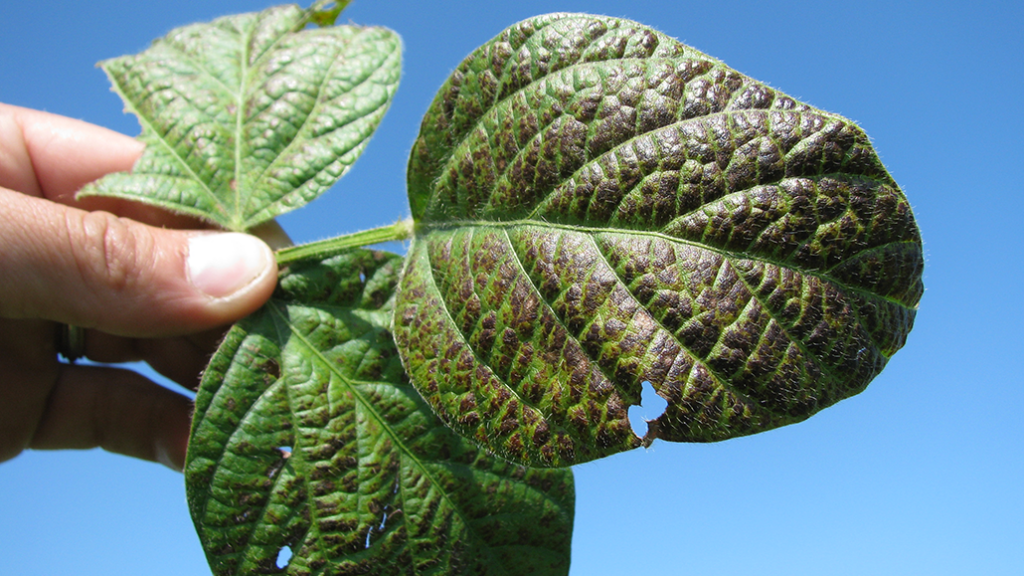
The main problem resulting from this disease is the purple stains left on the seed. This seed discolouration will cause downgrading and discounts, especially for IP varieties. The purple discolouration of the infected seed is transferred to the end product, so it can only be tolerated in small amounts. The seed is also usually smaller than healthy seed and has reduced oil and protein content.
When it comes to seed production, infected seed will have lower germination and vigour. In lab studies, germination has been reduced by up to 30 per cent. Seedlings will be smaller than normal, and infected seed cotyledons may turn purple and drop prematurely. Since this disease is seed-borne, infected seed should not be kept for seed.
MANAGEMENT
Clean seed treated with a fungicide treatment, good crop rotation, and minimal surface soybean residue will reduce infection potential. There are also varieties with greater tolerance, so proper variety selection can be important in the management of this disease. •






















